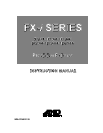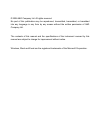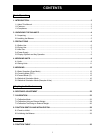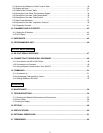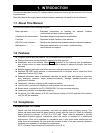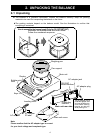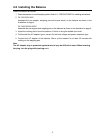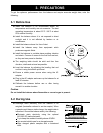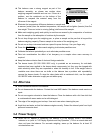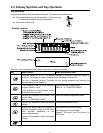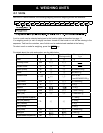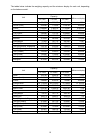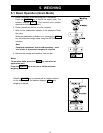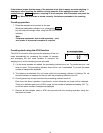
3
1. INTRODUCTION
This manual describes how the FX-i series balance works and how to get the most out of it in terms
of performance.
Read this manual thoroughly before using the balance and keep it at hand for future reference.
1-1 About This Manual
This manual consists of the following five parts:
Basic operation ........................ Describes precautions on handling the balance, balance
construction and basic balance operation.
Adapting to the environment.... Describes response adjustment and calibration.
Functions ................................. Describes various functions of the balance.
RS-232C serial interface.......... Describes the interface which transmits data and controls the balance.
Maintenance ............................ Describes maintenance, error codes, troubleshooting,
specifications and options.
1-2 Features
Compact general-purpose balance, can be installed almost anywhere.
Casing construction, strong protection against dust and moisture.
Stabilization time of one second. When FAST is selected for the response rate, a stabilization
time of one second, to read a displayed value after a sample is placed on the pan, has been
achieved.
Multiple weighing units with most of the common units used around the world.
Standard RS-232C serial interface to communicate with a computer and to output the Good
Laboratory Practice (GLP) data
Statistical calculation mode to statistically calculate the weight data, and display or output the
sum, maximum, minimum, range (maximum-minimum), average, standard deviation and
coefficient of variation.
Comparator Indicators, displaying the comparison results.
Hold Function, provided for weighing a moving object such as an animal.
Breeze break, provided for the FX-120i/200i/300i, for more accurate weighing.
Underhook, provided for suspended weighing.
As options, the USB interface (FXi-02), the Ethernet interface (Fxi-08) and the built-in battery
unit (Fxi-09) are available.
1-3 Compliance
Compliance with FCC Rules
Please note that this device generates, uses and can radiate radio frequency energy. This
device has been tested and has been found to comply with the limits of a Class A computing
device pursuant to Subpart J of Part 15 of FCC rules. These rules are designed to provide
reasonable protection against interference when this device is operated in a commercial
environment. If this unit is operated in a residential area, it may cause some interference and
under these circumstances the user would be required to take, at his own expense, whatever
measures are necessary to eliminate the interference.
(FCC = Federal Communications Commission in the U.S.A.)



